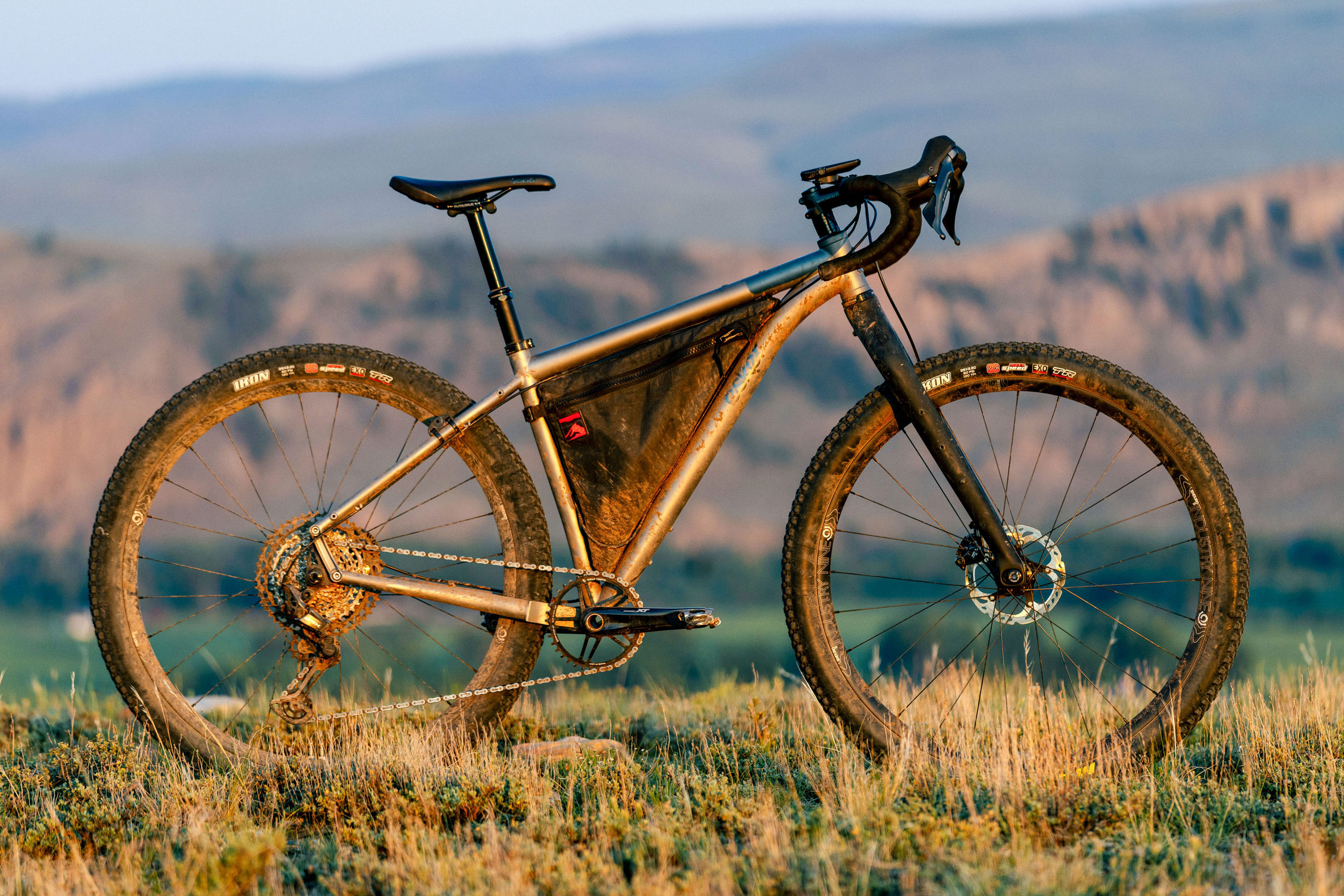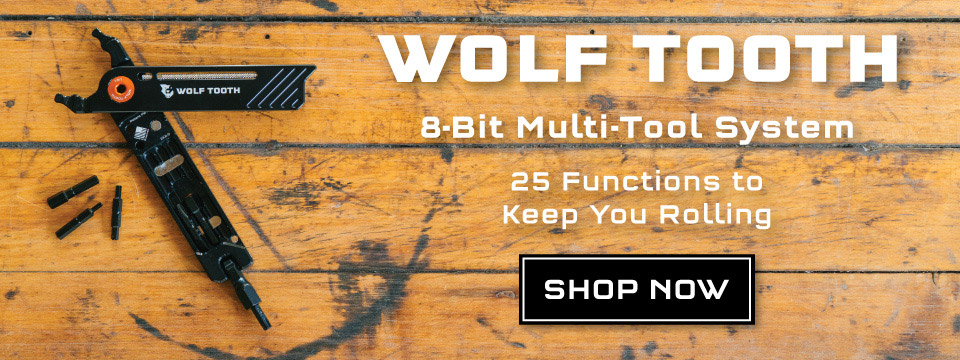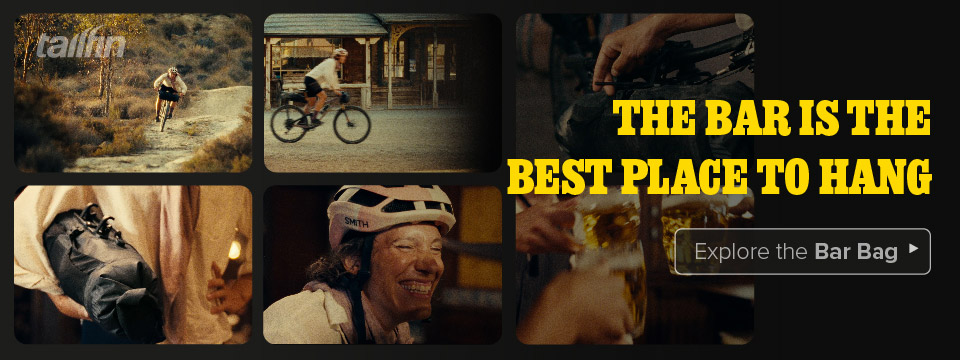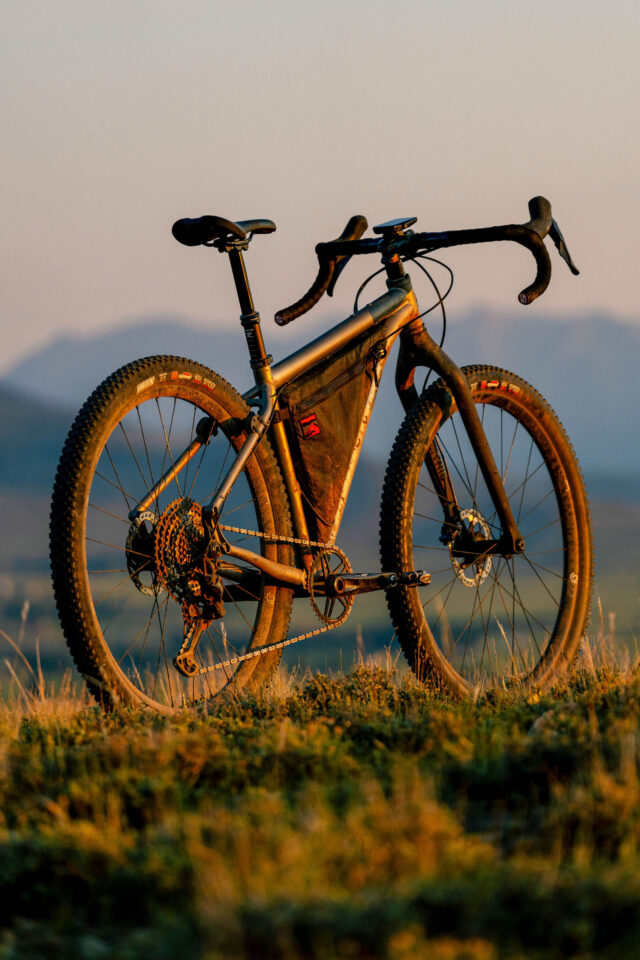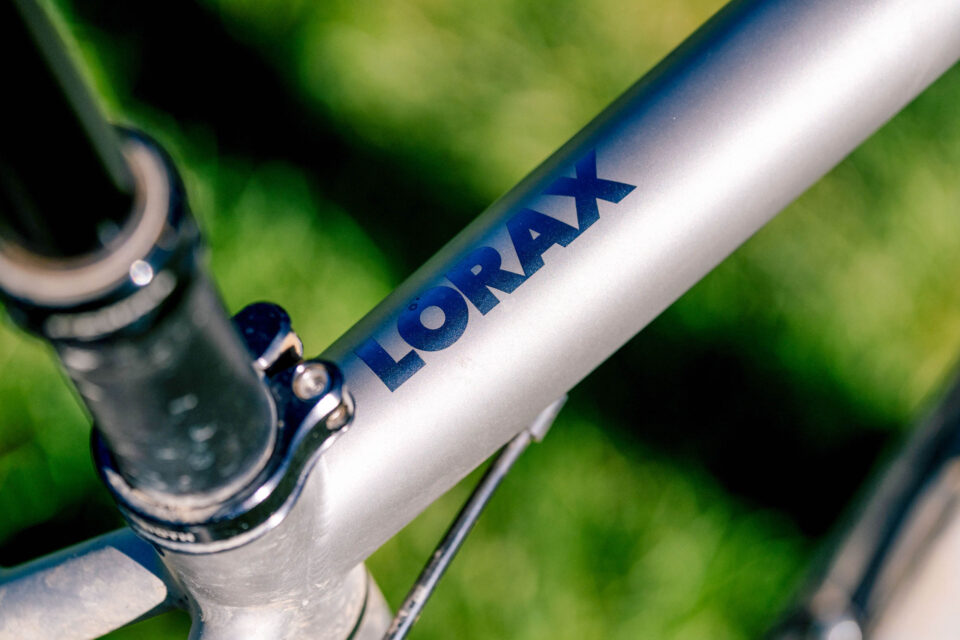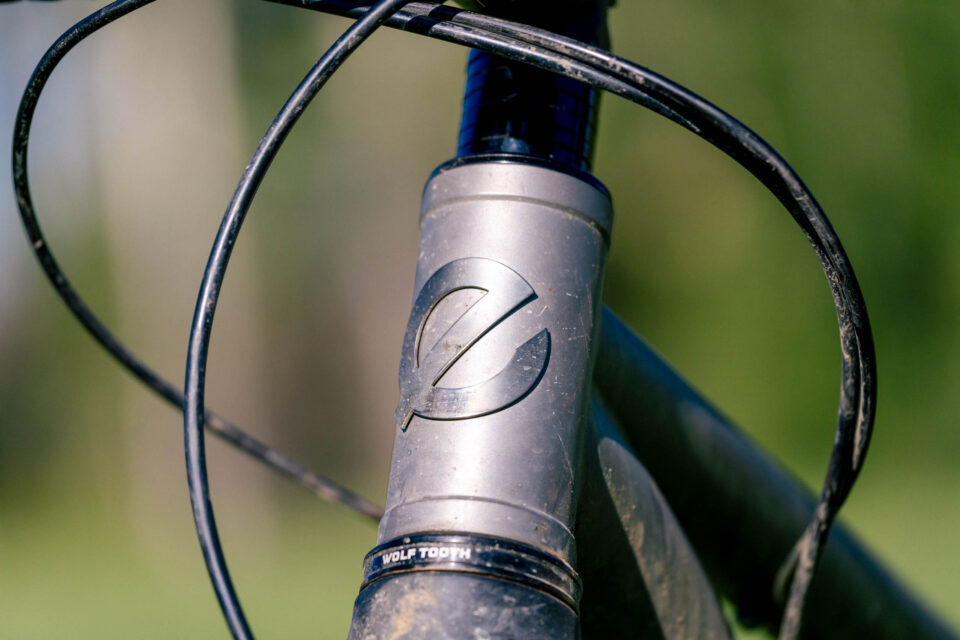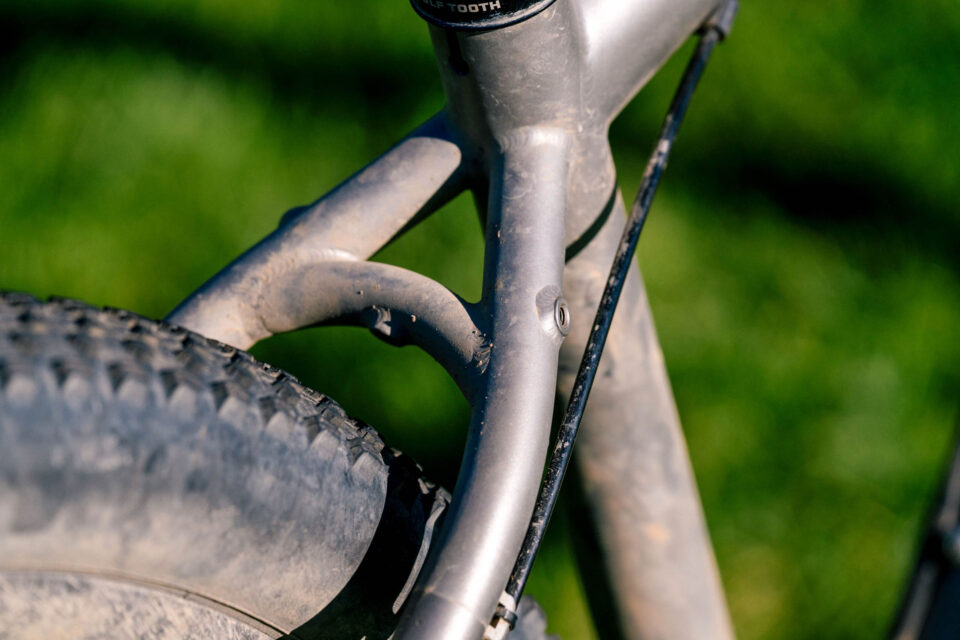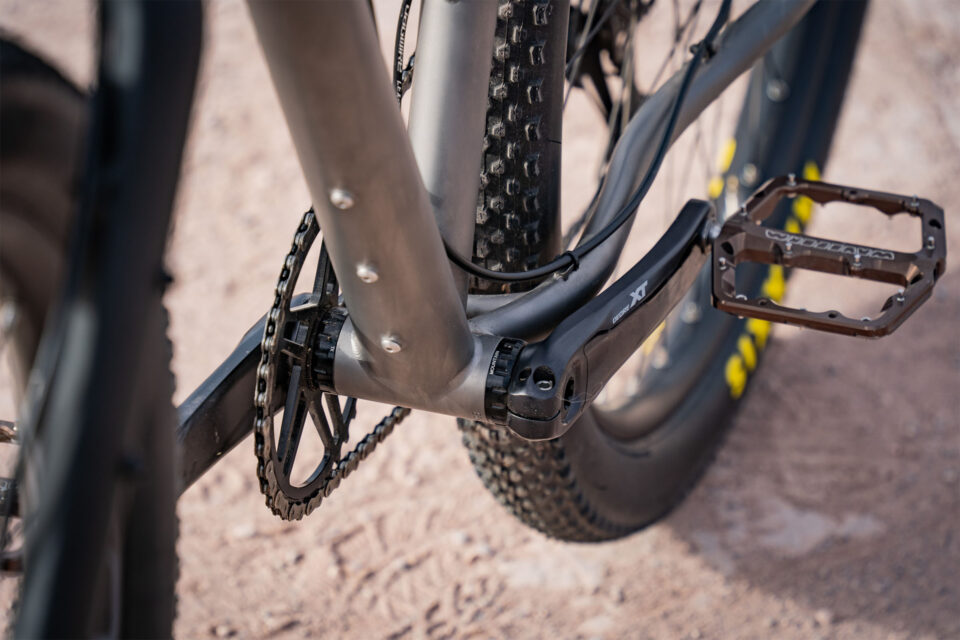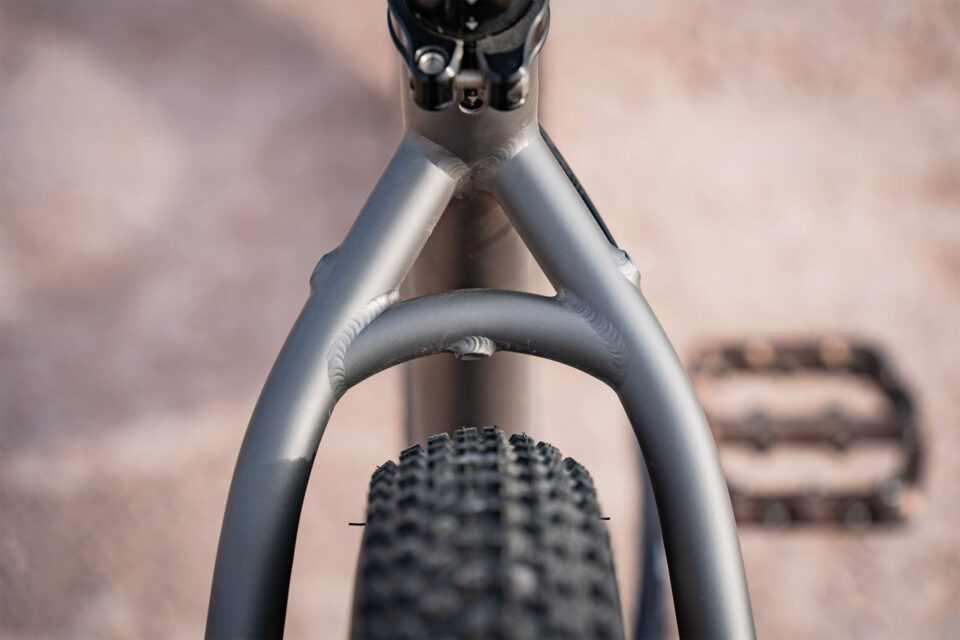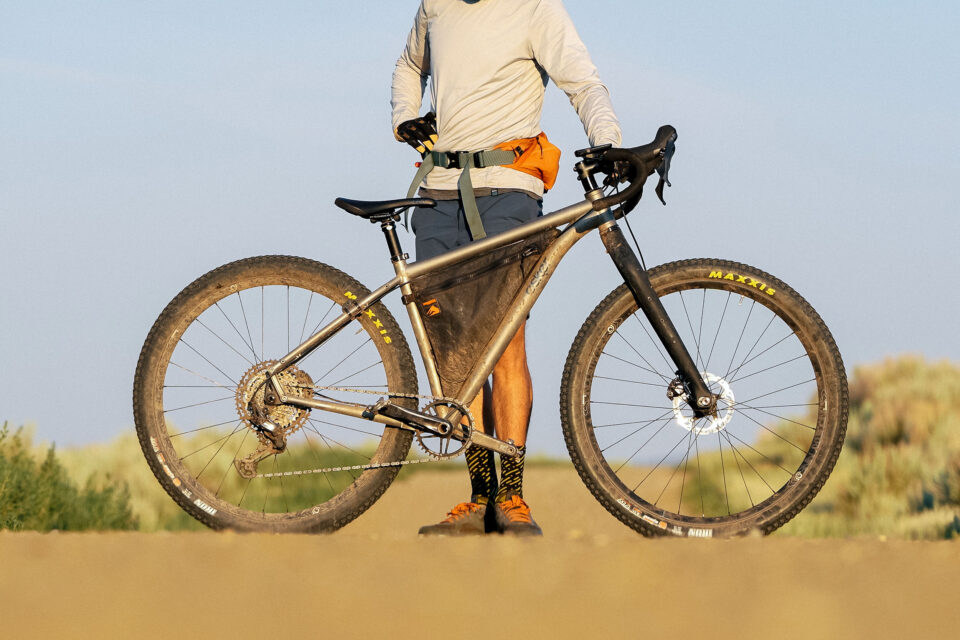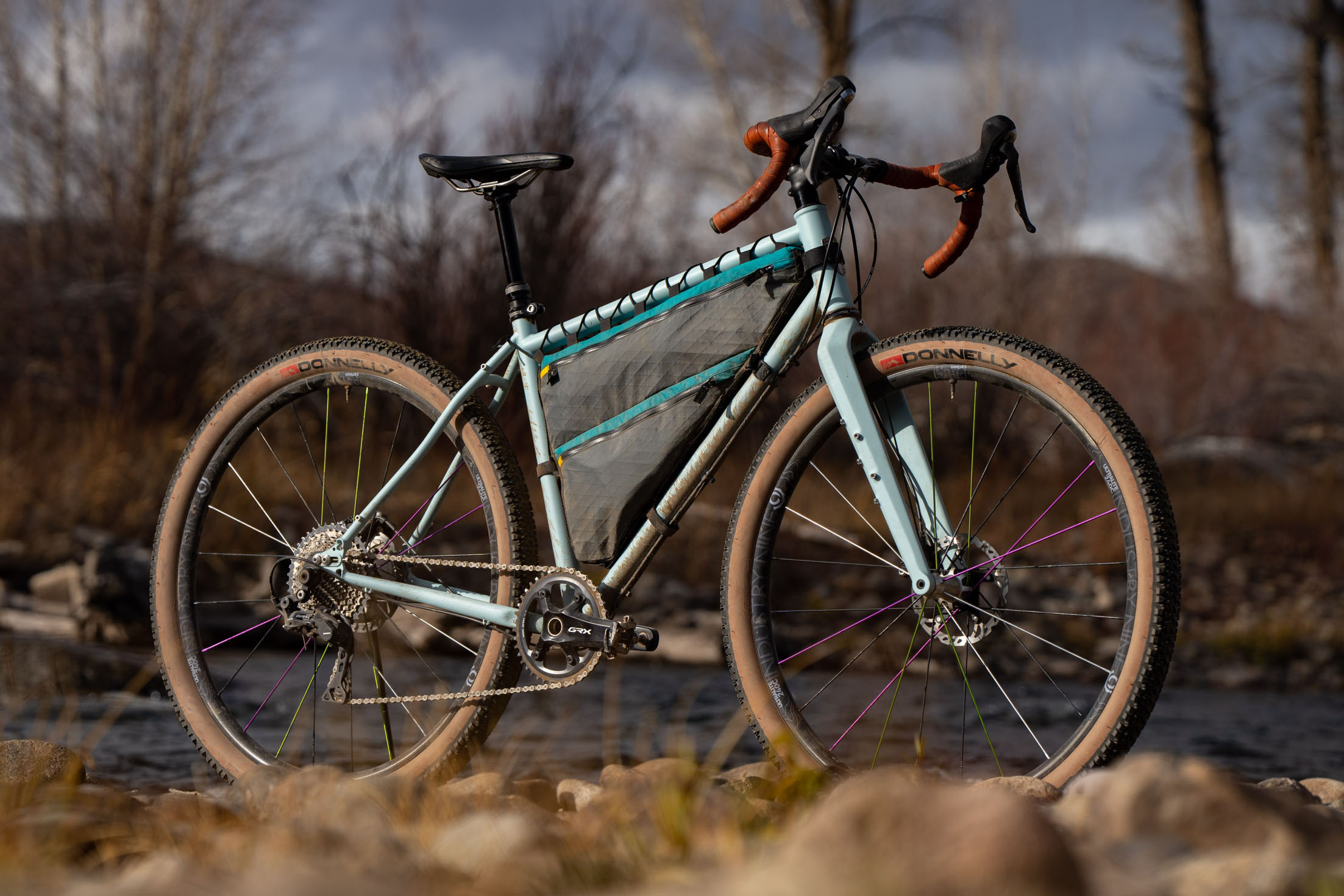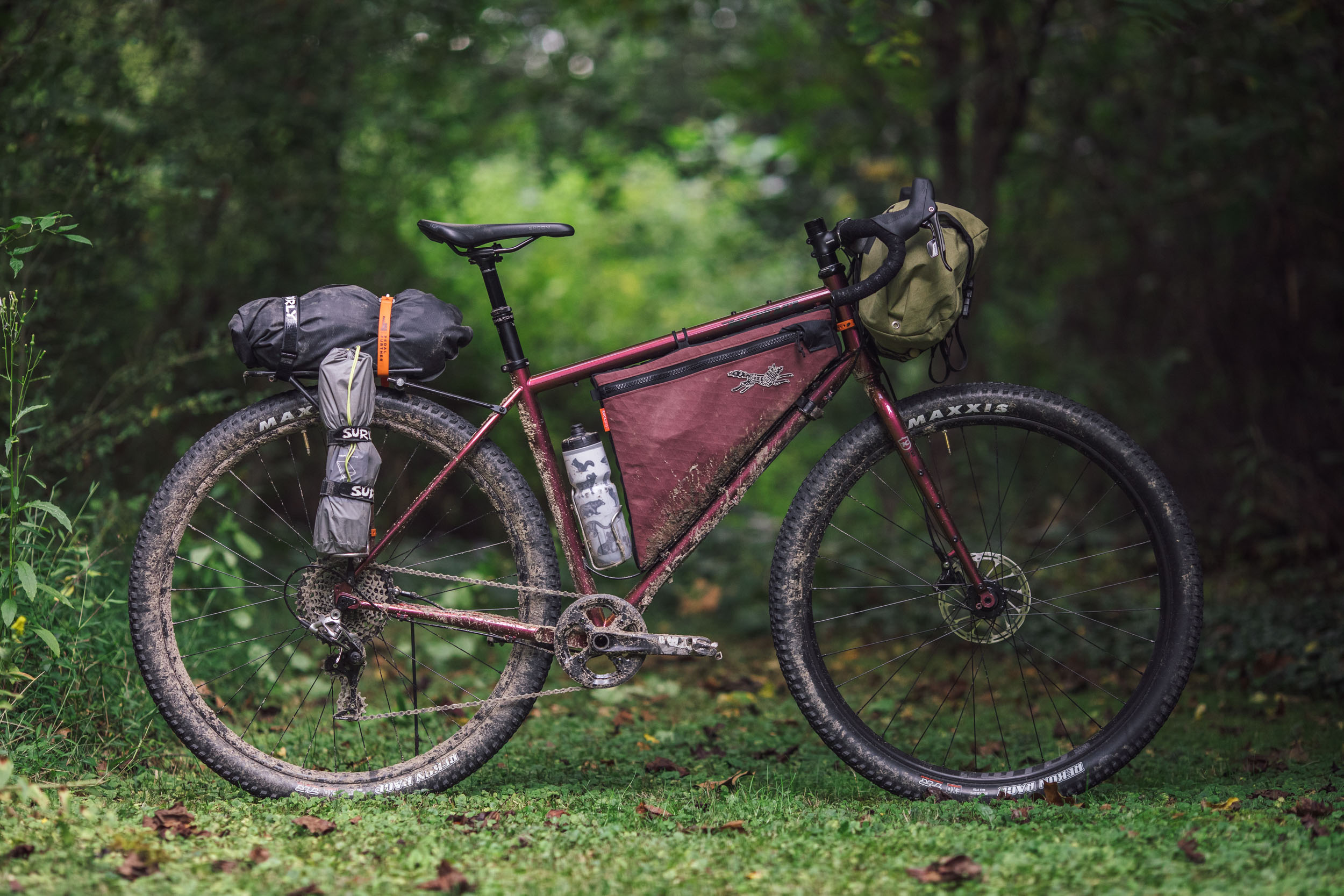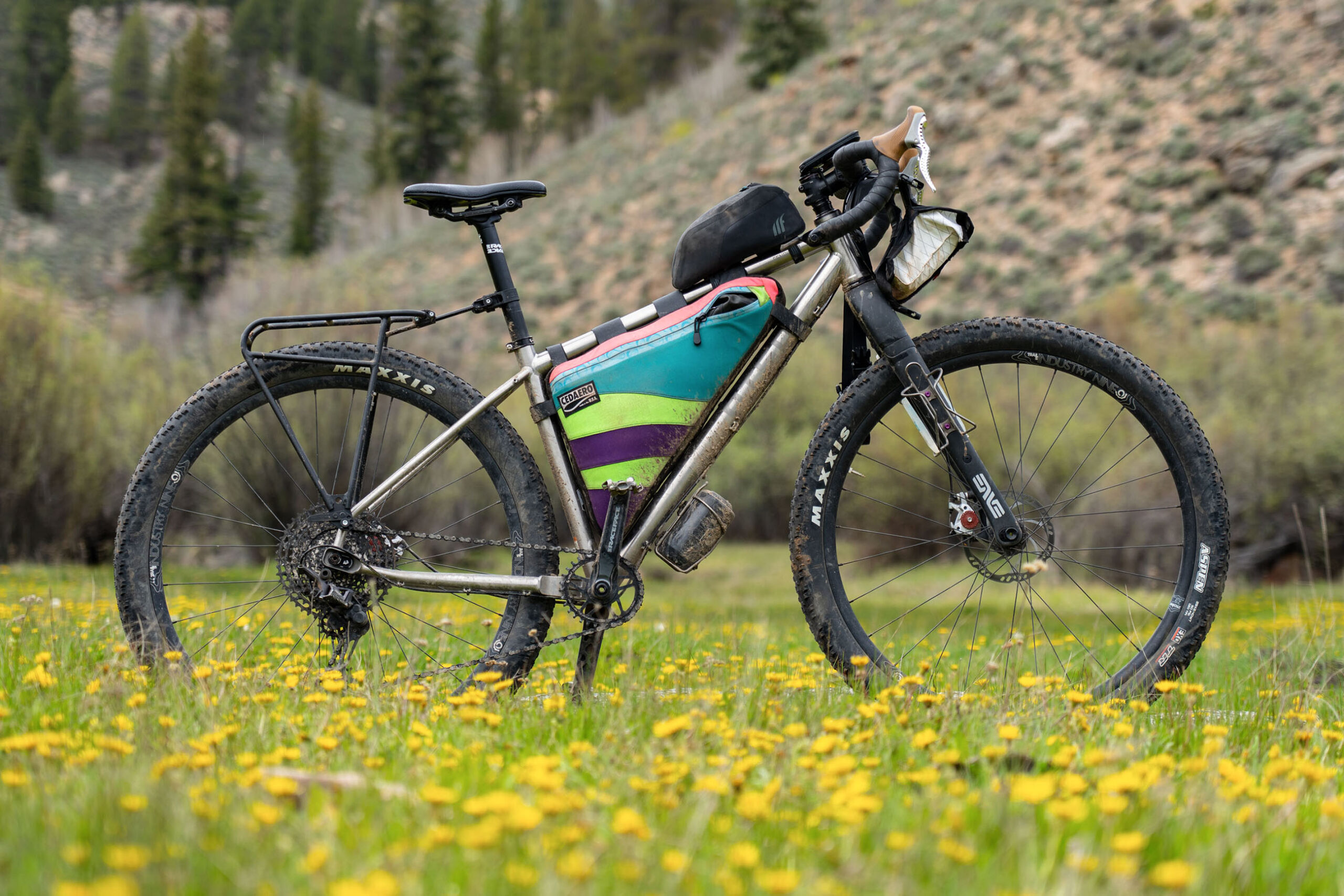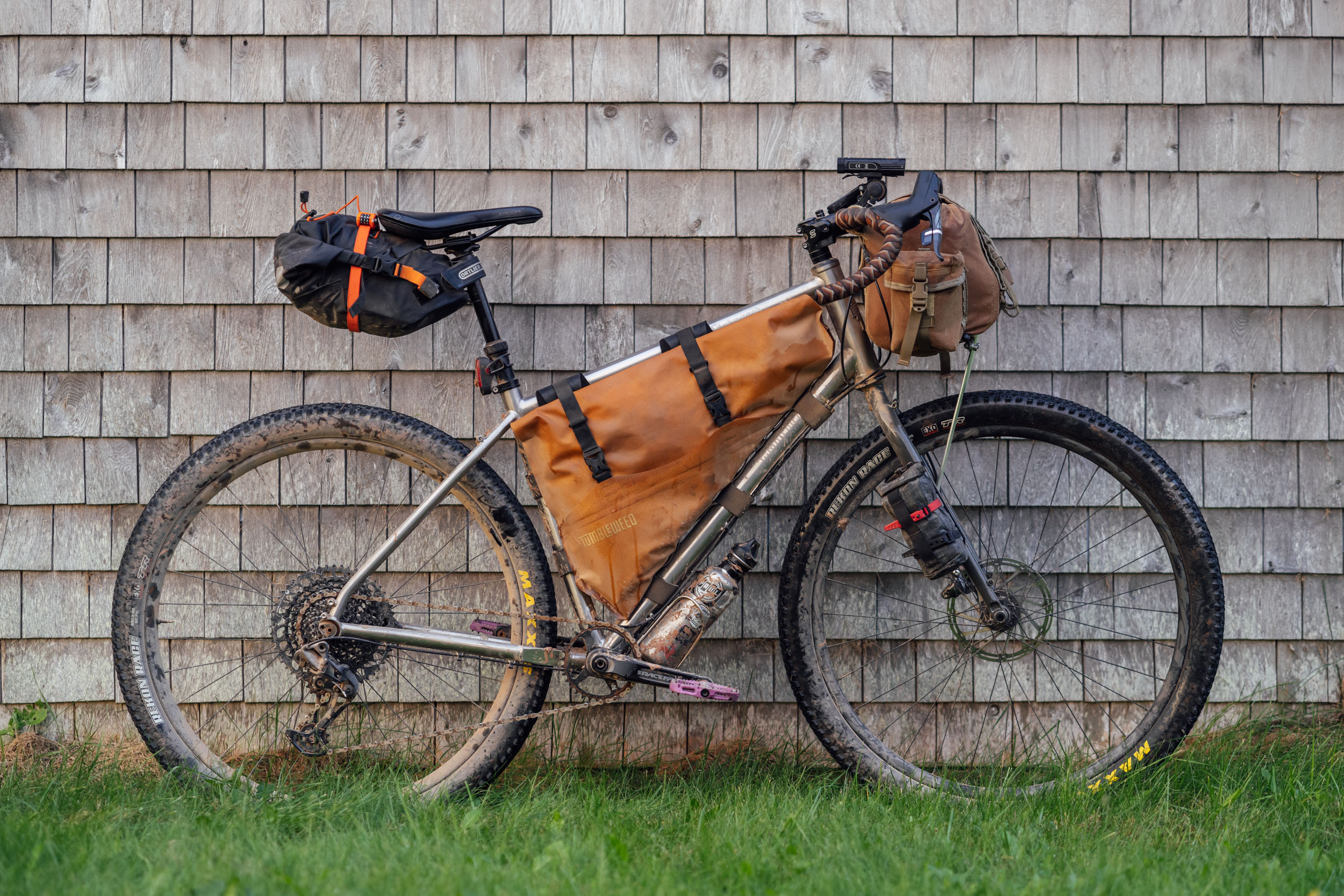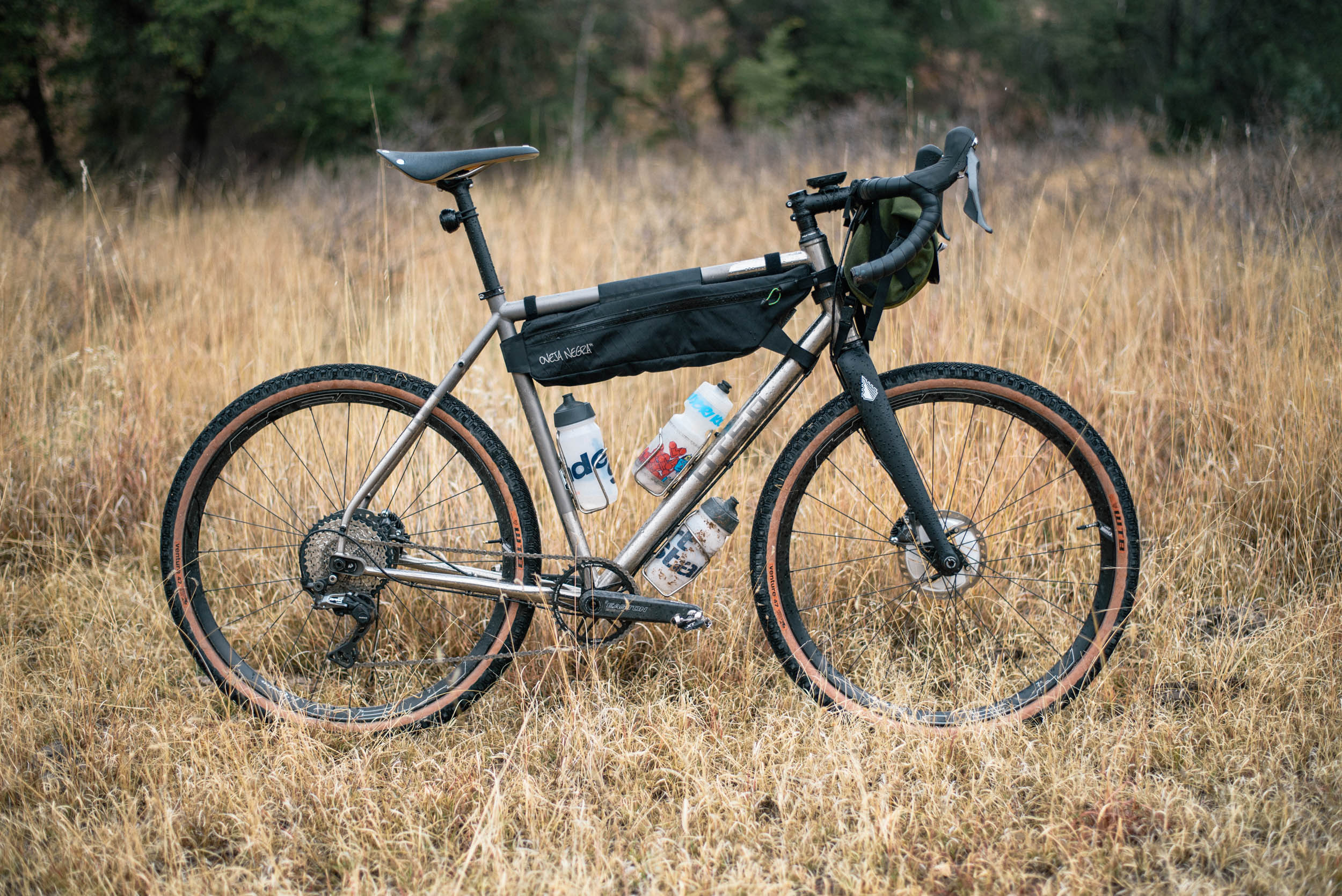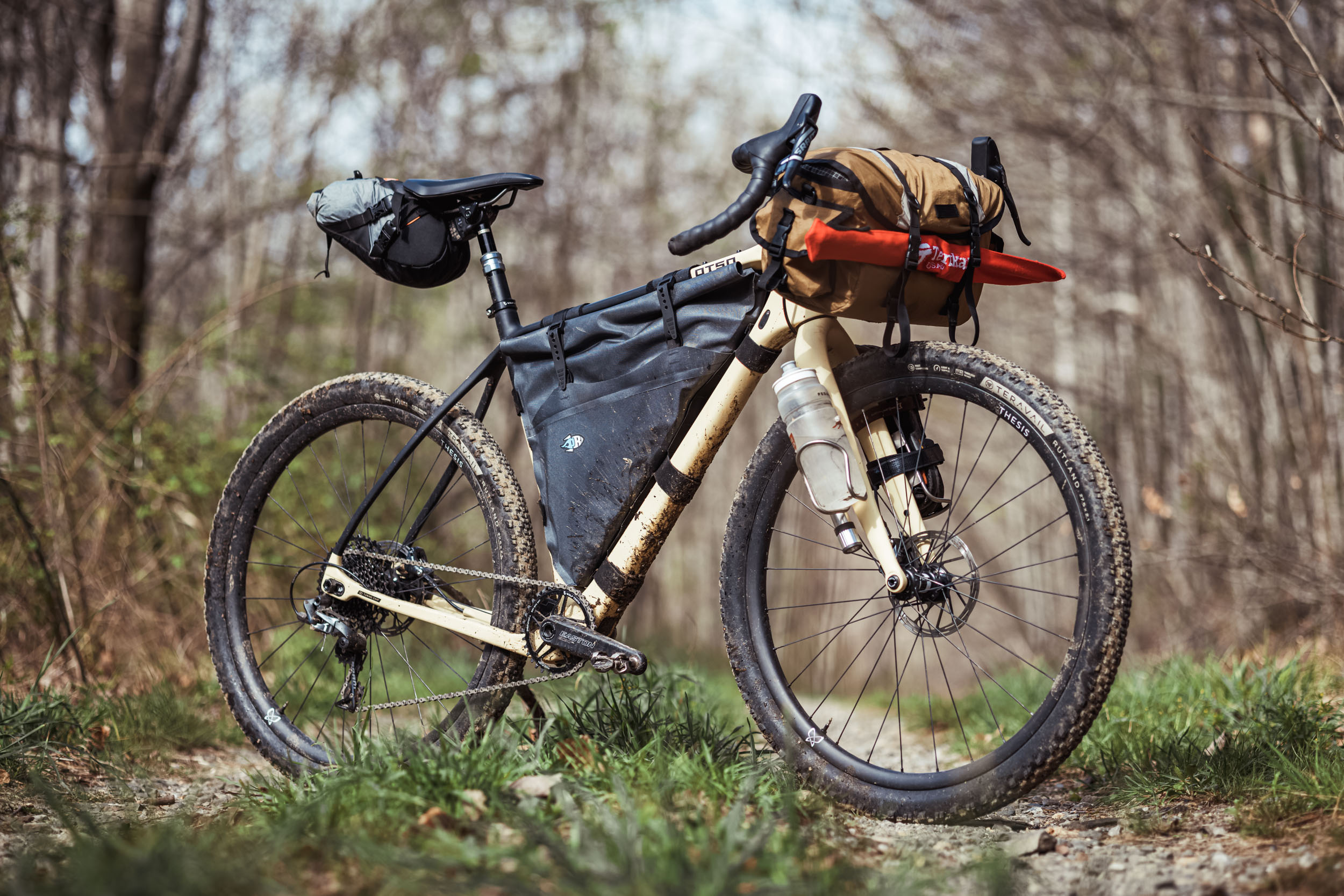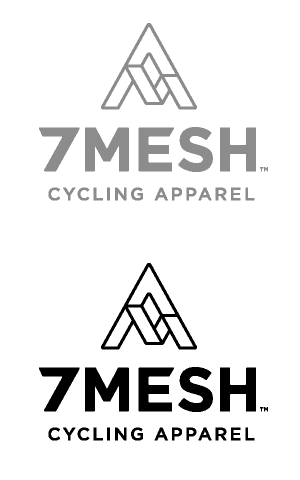Esker Lorax Ti Review: Reimagined Zippity-Zee
The new Esker Lorax Ti is the brand’s interpretation of the quintessential drop-bar mountain bike. Neil has been riding one for the past month, covering over 300 miles from the North Shore of Minnesota to the high elevations of the Rocky Mountains. In this review, he compares the Lorax Ti to similar bikes and shares its unique characteristics, value, and more…
PUBLISHED Aug 5, 2024
Looking up and down the Esker lineup, you’ll see their staples, such as the Hayduke and Japhy. However, what you won’t see any longer are their carbon models, like the Elkat, or any Orion suspension-designed bikes. Instead, they’ve been replaced with all-metal bikes “built for the backcountry.” That’s their slogan, and while it may seem like a significant shift for Esker, really, they’re just returning to their roots. This shift includes their newly launched Smokey hardtail and the Esker Lorax Ti, their rendition of the drop-bar mountain bike. But how does this bike stack up in a growing field of drop-bar mountain bikes? Find the review below, and keep scrolling for the written version with pros and cons and a full photo gallery.
The History of Lorax
As a dad of three years, I’ve read countless books, and almost all of them have a meaningful message—something about being kind, sharing, or helping prepare a child for big feelings. While a bit more complex, The Lorax, by Dr. Seuss, is a children’s book that offers a fable about the dangers of environmental destruction and corporate greed, emphasizing the importance of conservation and taking responsibility for protecting nature. It’s a fitting name for a bike and continues Esker’s trend of using characters from free-spirited or environmentally focused books as naming inspiration, such as those by Edward Abbey and Jack Kerouac.
The Lorax is not a new bike; it originally debuted under the Advocate Cycles brand, founded by Tim Kruger before transitioning fully to Esker Cycles. The Lorax was launched around 2016 as a steel cross/gravel bike with 40mm tire clearance. Eventually, Advocate Cycles was absorbed by Esker, and an updated Lorax was announced toward the end of 2022. This version had clearance for up to 700 x 50mm tires but was only on the market for a year before Esker decided to reevaluate the model. The result was a totally reimagined Lorax. While it still features a seamless, butted, and cold-shaped 3/2.5 titanium frame and drop bars, that’s pretty much all it shares with the 2022 version.
Behind the Esker Lorax Ti
The new Lorax is specced to clear 29 x 2.2″ to 2.6″ tires. While it’s designed around a rigid fork with a 495mm axle-to-crown, it’s also corrected for a 120mm suspension fork. Like all Esker bikes, it comes with its Portage dropout system and a UDH hanger. In this case, it comes fixed but is compatible with their Adjustable UDH Dropouts if you want to play around with chainstay length or a singlespeed setup.
The bike specs hit the sweet spot for me, featuring boost spacing, a 73mm threaded bottom bracket, 31.8mm seat post diameter, and all external routing—except for a dropper post. And while this bike comes with flat-mount brakes, both the rear dropout and the Lithic fork brake mount can be replaced to accommodate post mount if you’re looking for a more versatile brake option.

I’m 155 pounds, 5’9.5″ tall, and have a a 32″ inseam and a +2.5″ ape index. I went with a medium, as I usually do. The medium comes with a 56cm effective top tube, a 610mm stack, and a 380mm reach, a pretty typical stack-to-reach ratio for this type of bike. I never felt too upright, but this bike is certainly more upright than a standard gravel bike. I’m happy with the medium as I never felt like the bike was too small for me, especially paired with the 48cm drops that came on it. But the large is not out of the picture for me, either, although I think it would take away from that quickness I’ll get into later in this review.
| Size (495mm rigid fork) | SM | MD | LG | XL |
|---|---|---|---|---|
| Seat Tube | 400mm | 460mm | 510mm | 560mm |
| Top Tube (Eff.) | 537mm | 560mm | 587mm | 610mm |
| Head Tube Angle | 68° | 68° | 68° | 68° |
| Seat Tube Angle (Eff.) | 74° | 73.5° | 73° | 73° |
| Chainstay Length | 445-466mm | 445-466mm | 445-466mm | 445-466mm |
| Axle-to-Crown/Fork Travel | 495mm/120mm | 495mm/120mm | 495mm/120mm | 495mm/120mm |
| Bottom Bracket Drop | 68mm | 68mm | 68mm | 68mm |
| Wheelbase | 1075mm | 1094mm | 1118mm | 1143mm |
| Frame Stack | 600mm | 610mm | 645mm | 670mm |
| Frame Reach | 365mm | 380mm | 390mm | 405mm |
| Rider Height | 5’0″-5’7″ | 5’3″-5’10” | 5’6″-6’1″ | 5’9″-6’4″ |
As far as geometry is concerned, there’s nothing unordinary that stands out. The bike largely falls in line with many other drop-bar MTBs, featuring 445mm chainstays, a 73.5° seat tube angle, and a 68° head tube angle. With the 68° HTA, which is a degree slacker than most, it may be a little more aggressive, but with an overall wheelbase of 1,094mm on the medium size, it’s still not the longest. Just look at this chart of comparable bikes. The 649mm front center gives the front end sufficient space to tackle obstacles and feel confident on high-speed singletrack. It’s not as inspiring as the Otso Fenrir, but that bike was designed for flat bars, so take that with a grain of salt.
| Metric | Esker Lorax (M) | Pipedream ALICE (M) | Salsa Fargo (M) | Salsa Cutthroat (56) | Tumbleweed Stargazer (XM) | Kona Sutra LTD (54) |
|---|---|---|---|---|---|---|
| Stack | 610 | 603 | 643 | 619 | 630 | 609 |
| Reach | 380 | 390 | 368 | 385 | 382 | 395 |
| Top Tube Length (Ef.) | 537 | 560 | 565 | 560 | 575 | 575 |
| Head Angle | 68° | 69° | 69° | 69° | 69° | 69.5° |
| Seat tube angle | 73° | 74.5° | 73° | 74.25° | 73° | 73.5° |
| Fork Offset | 44/52 | 44 | 51 | 51 | 55 | 55 |
| Trail | 102/94 | 95 | 86 | 86 | 82 | 79 |
| BB drop | 68 | 70 | 70 | 70 | 63.5 | 72 |
| Chainstay length | 445 | 450 | 445+ | 445 | 450 | 445 |
| Wheelbase | 1094 | 1087 | 1083 | 1090 | 1104 | 1094 |
The Lorax Ti comes equipped with a Lithic Mountain Fork that can be switched from 51.5mm to 44mm offset. I tested both, but my preference, and the way the bike arrived to me, was in the 44mm offset position. This, paired with the overall geometry, provided solid stability at higher speeds and very responsive steering at low speeds. I found it to be a little twitchy in the 51.5mm position, which wasn’t the case in the 44mm position. All told, the bike has 102mm of trail in the 44mm position. That’s technically the most trail I’ve tested on a drop-bar mountain bike. The closest is the Pipedream ALICE, which has 98mm of trail. That said, I recall feeling some wheel flop with that bike, which makes me wonder if the HTA was actually slacker than their claimed 69°.
In any event, the trail is the horizontal distance between the point where the front wheel touches the ground and the point where an imaginary line drawn through the steering axis (head tube angle) intersects the ground. Coincidentally, bikes with more trail have been my favorite, including the ALICE and Otso Fenrir. Despite the high trail on the Lorax, it felt more balanced than either of those bikes.
Material is Everything
The Lorax comes in two forms: titanium (Ti) and steel. While Logan is testing the steel Lorax (review coming soon), I had the pleasure of testing the titanium version. Although there are no geometry differences between the two, steel and titanium are distinct materials. Logan mentioned that he felt the ride quality of the steel version was fairly average. Despite the fact we were riding the same geo, they are made with two different materials and in different sizes, so I could understand that these are two different bikes that each deserve their own review.
The oversized titanium tubeset offered a rather stiff ride overall. The tubes are custom-shaped to enhance stiffness and compliance in specific areas, such as the ovalized shapes near the downtube bottom bracket area and the top tube seat tube area. This, paired with some oversized tubes, creates one of the snappy titanium bikes I have pedaled while unloaded. Additionally, it’s worth noting that the medium frame has the top tube and downtube junction welded together, whereas the Large and XL frames do not.
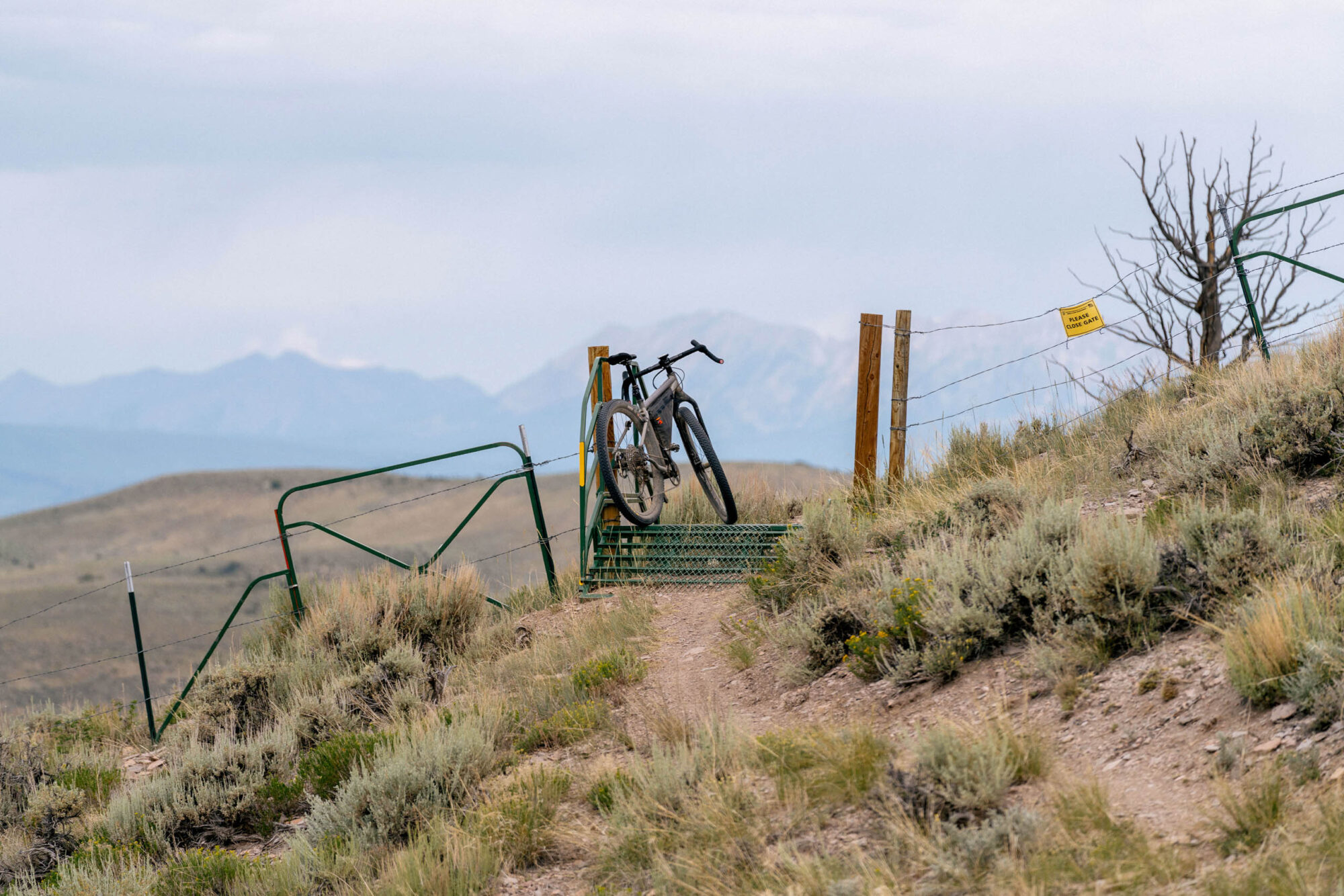
I appreciated this stiffness. I could feel the front-end stiffness with the carbon fork and welded junction near the head tube, and while I noticed it to be a little harsh on chunky descents, it offers more life on climbs, making me feel like all my power is being transferred into the frame. It offers a similar feeling to that of the Cutthroat, where the carbon does a good job of channeling power back into the frame and eventually into forward motion. In contrast, I think what Logan is feeling with the steel version, with its smaller tubeset, doesn’t offer that same level of stiffness. Logan also mentioned there is no ovalized tubing in the steel version, but rather the tubeset is fluted in certain areas, further differentiating the ride quality. All told, the bike is not super light with its chunky tubes, and the titanium frame comes in at a claimed weight of 2,236 grams or 4.9 pounds for the medium without fork. The full build weighs 11.08 kilograms (24 pounds and 7 ounces), complete with grit and grime.
Ride Quality
Aside from geometry and material, or perhaps because of them, this bike is a true blast to pedal. I found myself riding it on rougher trails and roads, rather than just standard gravel roads; after all, it’s a drop-bar mountain bike. The bike was snappy on accelerations, agile in handling, and inspiring in descending quality. In fact, during my first few rides, I set personal records on some climbs and routes, even achieving a few top 10s on rides where I usually bring my mountain bike. Although I wasn’t nearly as fast on the descent, it demonstrates that the bike can handle relatively easy singletrack climbs with urgency and is generally quick. When the grade got steeper, the bike balanced me well, keeping my butt positioned on the saddle while the front wheel remained very planted while still putting me in a good pedal position.

The bike also had a very playful quality. A smaller bike, in general, offers this, as opposed to something with a super long reach and front center. I found myself quickly turning the bike from side to side, skidding, jumping, and having a super fun time on it. But when going fast, I really appreciated the balance between the high trail geometry and the stack height. When I was in the drops, I felt like I could lean into turns and felt confident at higher speeds. The longer trail on this bike and that of the Pipedream ALICE really offer an inspiring ride, and now that I’m so used to riding bikes with higher trail, I find that the adjustment is a non-issue. By the end of my test period, I felt so confident on this bike that I tackled an iconic trail in Crested Butte and some local Gunnison singletrack. I got so confident that I nearly crashed a few times and had to reel it back and remind myself what I was riding.
If you were to ask me what I would change on the bike, it wouldn’t be much. I would hate to take away that balanced feel, but I might try and reduce the chainstay length by 5mm and add that to the front center. I would also add a chainstay protector, as the chain hits the stay on even the moderate bumps, and its really loud and annoying.
Bikepacking
Most drop-bar mountain bikes, if not all of them, are built for bikepacking, and the Lorax excels in this regard with 22 mounts and a solid frame. The frame comes with both rack and fender mounts, top tube mounts for direct-mount top tube bags, and a set of three-pack mounts on either side of the down tube. I used the Lorax Ti with an Old Man Mountain Elkhorn Rack and ended up mounting their pucks for the Elkhorn struts as I didn’t want to bend them since this is just a test bike. But normally, the rear rack mounts should work fine for you.
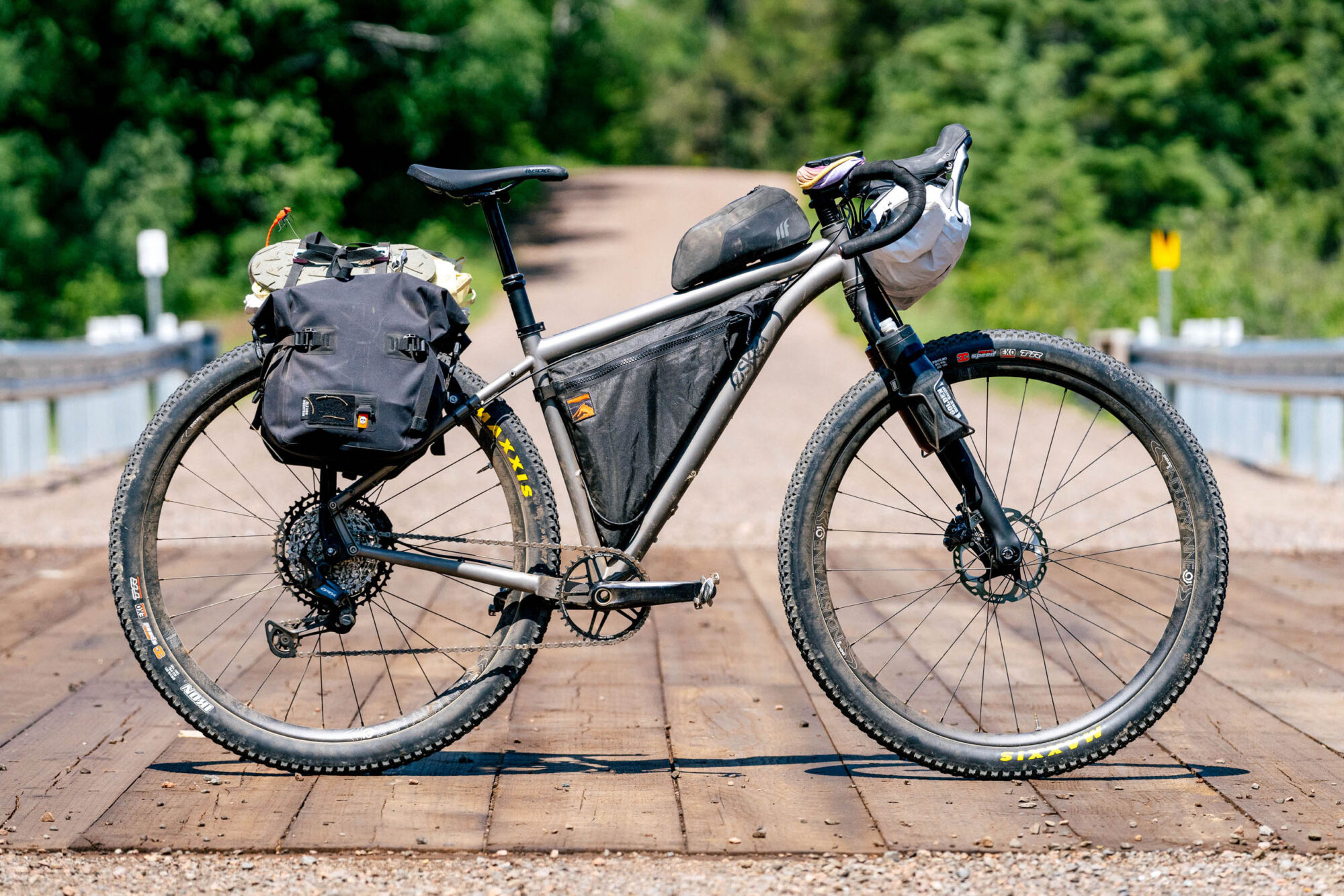
As far as packing my bike, the rear rack was a great option, and I even mounted some panniers on the sides, something I normally don’t do, but it worked great. Rockgeist sent a really nice full-frame bag that fit like a glove, but the frame itself is undoubtedly smaller than many others in this category, so you only have a little space to put things inside the frame, which is slightly disappointing, especially for small and medium frames. Also, while I prefer external routing, installing the direct mount frame bag was really annoying as I had to also re-install all of the cable guides at the same time.
Up front, I was able to pack plenty between the 48cm drop bars, and the fork came with three-pack mounts on the sides, so I utilized those for water storage. Once it was loaded down, surprisingly, it was not too dissimilar to it being unloaded. It offered that quick acceleration and inspiring descending, all with slightly more comfort. However, it was certainly stiffer than most other titanium bikes I’ve tested while loaded, even with more weight on it than my normal bikepacking loads.
Specs
While you can pick a few custom specs on their website, I more or less got their stock titanium build. For starters, Esker specced it with the new Shimano GRX 12-speed levers with GRX flat mount brakes, an XT crank and derailleur, and an SLX cassette. It also came with a 38-tooth Wolf Tooth front chainring (the bike has clearance for a 40t or 38 oval). This setup offered reliable 1×12 shifting with a solid gear range. Some might want a smaller front ring, but for me, it was perfect for the varied terrain on which I usually find myself riding. The GRX hoods are comfortable, and the 12-speed group is a nice upgrade from the last GRX system I tested, which was the 11-speed group. I could have used more powerful brakes on some descents, so an upgrade to a more powerful flat-mount caliper or better post-mount calipers compatible with the GRX levers would be ideal. While the right lever does all the shifting, the left lever actuates the 125mm dropper post, which I found to be a game-changer on this bike. It lets you shift weight around and simply feel much more confident on the bike.
- Fork: Wolf Tooth Lithic Mountain Carbon
- Headset: Wolf Tooth Components, ZS44/EC44
- Spacers: 30mm
- Stem: PNW Coast Alloy. SM/MD=60mm, LG/XL=70mm
- Handlebar: PNW Coast, SM=440, MD/LG=480, XL=520
- Tape: PNW Bar Tape
- Brakes: Shimano GRX Hydraulic, Flat Mount
- Rotors: Shimano RT-86, 160mm
- Dropper Post: PNW Loam, 125mm
- Dropper Lever: Integrated into GRX Brake Lever
- Saddle: SDG Custom Esker BA3
- Wheels: Stans Flow S2 Comp 29
- Drivetrain: Shimano GRX/XT, 12 speed, 10-51 SLX Cassette
- Cranks: Shimano XT 170mm w/ Wolf Tooth 38t Chainring
- Tires: Maxxis Ikon, 29×2.2
The one upgrade Esker sent with this test bike was the Industry Nine 1:1 Enduro S alloy wheels, which is an additional $300 over the stock Stan’s Flow wheelset. I’ve pedaled these wheels a lot and have had no issues with them. They have solid engagement for the tight technical bits and have always remained true. Mounted to those were some Maxxis Ikon 2.2” tires with EXO sidewall protection, a tire I’ve used on and off for almost a decade. It’s a great, fast-rolling tire that carries speed and hooks up in the corners. And as you can see, there is loads of space for a 2.4 or even 2.6″ tire. If I were to race something like the Tour Divide on this bike, I would stick with this setup. I think it rolls well, and it’s a great tire overall.
As I mentioned, the Lithic fork saw a lot of abuse and worked great. It has clearance up to 3″ rubber and is super easy to adjust the offset positions without re-adjusting the caliper. Rounding out the rest of the bike, Esker is speccing PNW bar and stem, and it comes with a straight head tube with a ZS44/EC44 Wolf Tooth headset and 30mm of stack spacers for you to play with.
- Model/Size Tested: Esker Lorax Ti, Medium
- Actual Weight: 24 lbs 7 oz (11.08 kg)
- Place of Manufacture: Taiwan
- Price (complete): $4,500
- Price (frame): $2,500; $3,100 for frame/fork
- Manufacturer’s Details: Esker Cycles
Pros
- One of the fastest drop-bar mountain bikes I’ve pedaled
- Ti construction is well-thought-out, offering a snappy yet supple feel
- High trail is inspiring on descents
- Lithic Mountain Fork offset adjust is a cinch
- Balanced geometry that’s great for all-day riding with a load
Cons
- Frameset is a bit on the heavy side for titanium
- Super loud chainstay
- Limited main triangle space on the medium
- Would like to have seen stock adjustable dropouts
- GRX brakes left something to be desired
Final Thoughts
So, who’s the Esker Lorax Ti for? Well, if you’re in the market for a drop-bar mountain bike, and like me and enjoy going fast, especially while pedaling, this might be the bike for you. Thanks to the Ti tubeset and construction, it clearly prioritizes efficiency without much penalty on the way down doe to its high trail geometry. It’s nimble, playful, and more stiff than I expected from a titanium bike. I would absolutely ride it in a race like the Tour Divide. But, more so, I was just motivated to get out and pedal on it. It has a way of blending two distinctly different rides together, helping open up a world of route possibilities and ideas. Yes, it has relatively limited frame storage space, but it has plenty of mounts for other means of carrying bikepacking gear. All told, this is one of the more fine-tuned drop bar mountain bikes I’ve tested.
The Ti frameset comes in at $2,500, and the full build is $4,500. This is in line with the Salsa Ti Fargo, cheaper than the Otso Ti Fenrir, and more expensive than the Ti Tumbleweed Stargazer, which comes with a steel fork.
Further Reading
Make sure to dig into these related articles for more info...
Please keep the conversation civil, constructive, and inclusive, or your comment will be removed.






